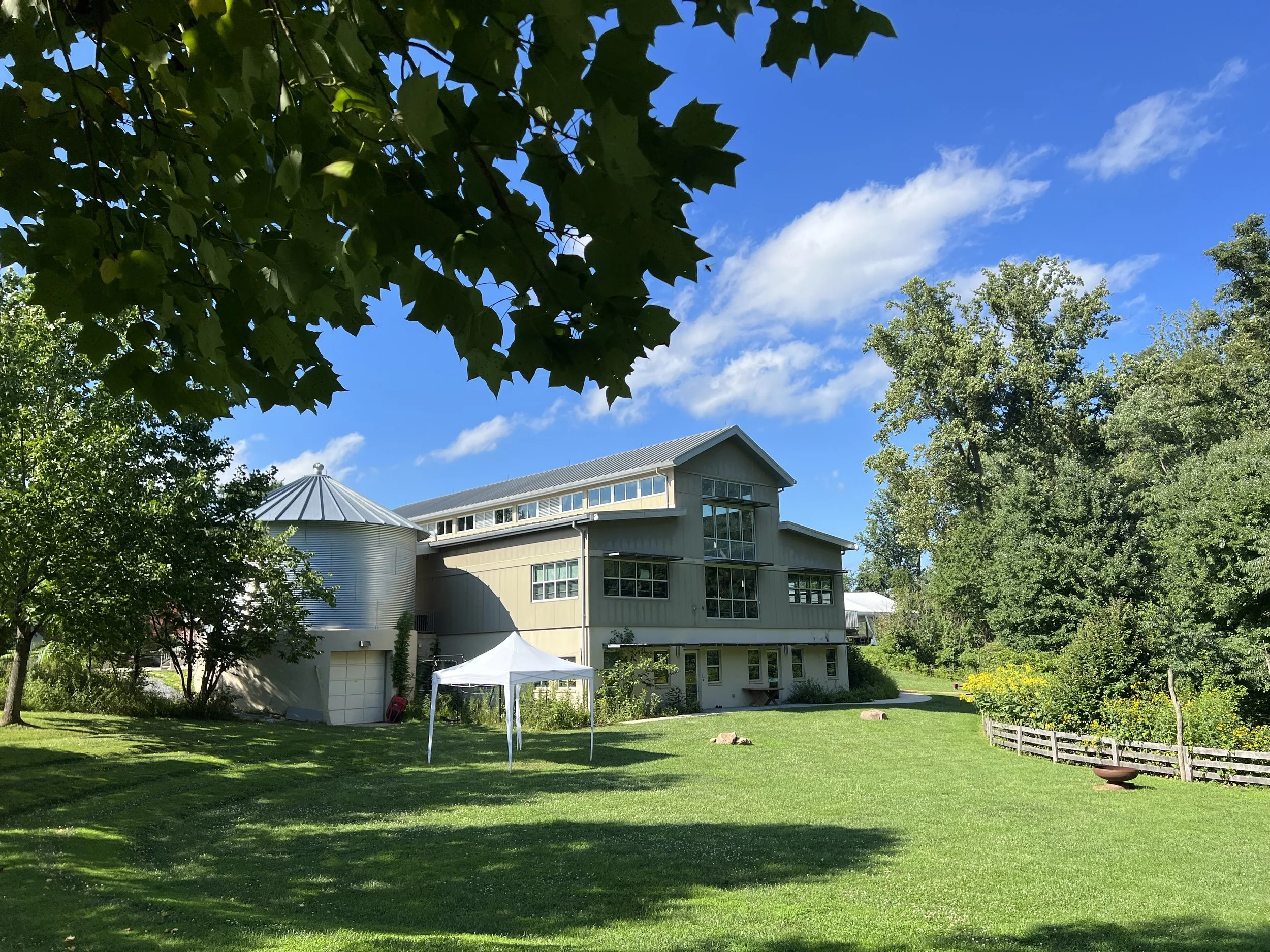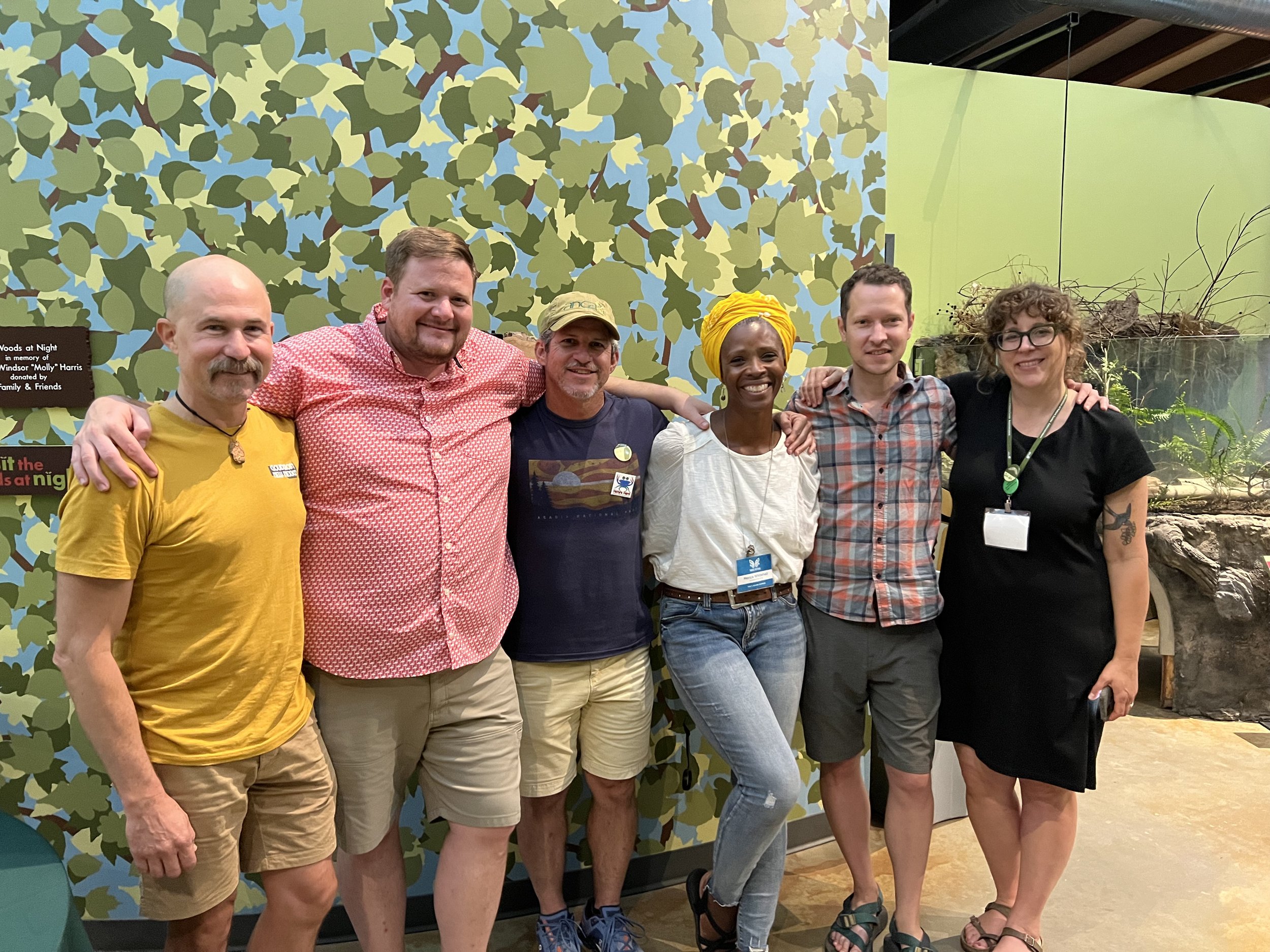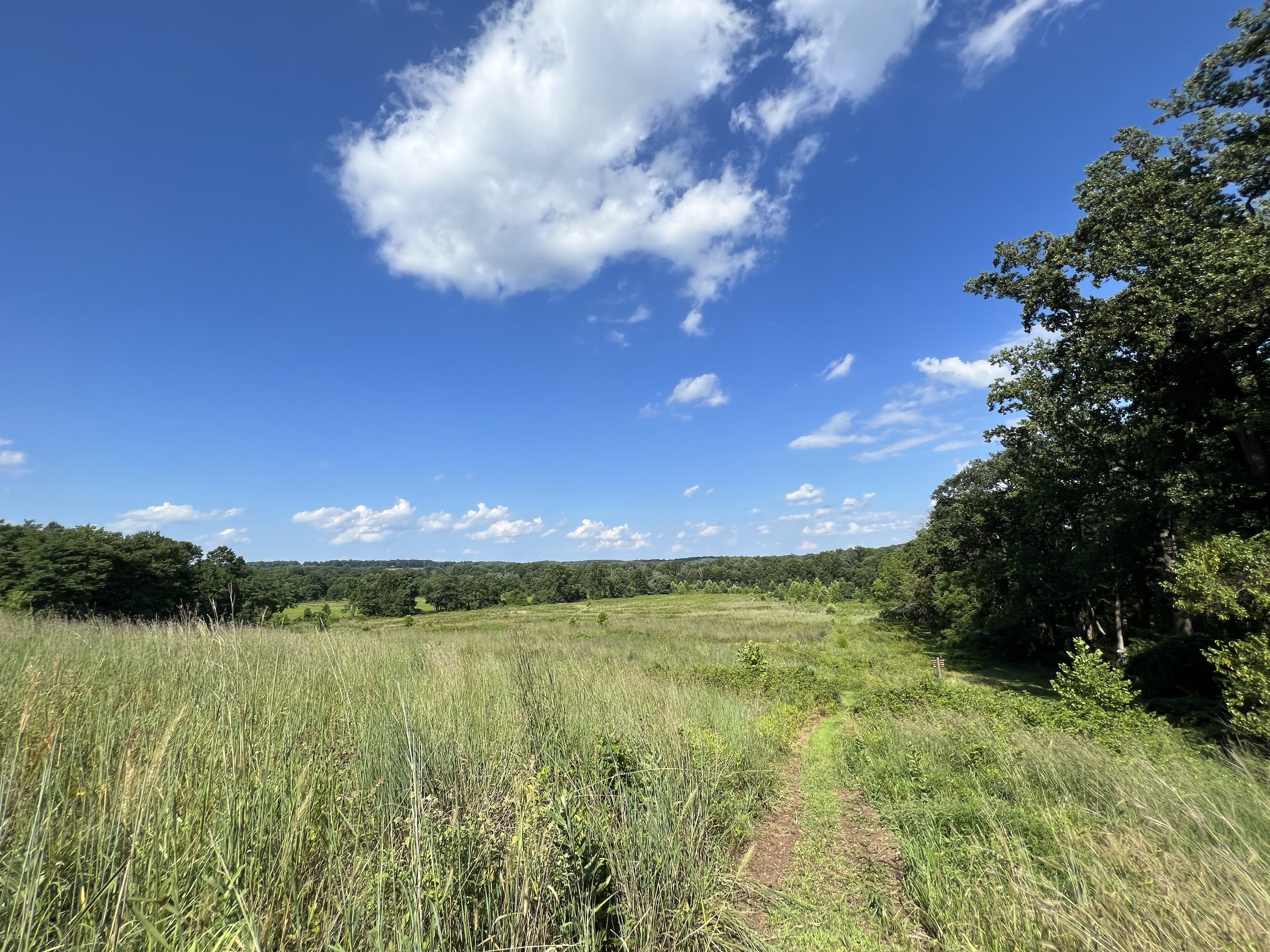Emerging Trends in the Nature Center Profession
Our President & CEO, Mark McKnight, recently returned from the Association of Nature Center Administrators’ annual conference, “Thrive Outside”, held outside Baltimore, Maryland. Here, he provides a few thoughts from his time out of the office touring other nature centers and learning from others in the profession.
The host center, Irvine Nature Center, located in Owings Mills, MD outside Baltimore. While this building offered some fantastic amenities, Irvine already has big plans for expansion and another capital campaign in the works.
On the back of this year’s ANCA Summit guide, a tagline read “Nature centers make our communities livable and sustainable. ANCA helps to lead these organizations forward.” I couldn’t agree more with this statement. The ANCA summit has been a can’t-miss for me since I attended the first time in 2018 and had the opportunity to connect with other leaders facing similar challenges. Now having attended my fifth Summit, I can say that the support network provided through ANCA has been a large part of why Reflection Riding is now a thriving entity.
I wanted to process my experience and found that I had too many thoughts for one article. Here, I decided to focus on two major takeaways: 1) We’re all focused on building sustainable organizations and 2) many of us are in need of further investments to handle the enormous increase in demand for what we do.
Building Sustainable Organizations
The nature center profession has been a leader in sustainability and has recognized the need to open the invitation to the entire community to participate in our work. DEI, JEDI, ESG—whatever acronym we use, it’s clear that we’re all trying to increase the diversity in our community of supporters and staff, make space for people who have been historically underrepresented in the nature center field, and inspire the broadest possible audience to join us in our passion for connecting people with nature. We’re working intentionally to align our values with our actions and our investments in time and resources. It was encouraging to meet the other winners of the ANCA Leadership Awards. As this year’s chair of the awards committee, I had the pleasure of learning more about a variety of leaders across the country.
This year’s “Thrive Outside” Summit gave several of ANCA’s “New Leader” award winners from prior years a chance to honor this year’s winner and learn from each other. From left to right: John DeFillipo (John Bunker Sands Wetland Center in Seagoville, TX), John Myers (Indian Creek Nature Center, Cedar Rapids, IA), Chad Truxall (Marine Discovery Center, New Smyrna Beach, FL), Merica Whitehall (Fontenelle Forest, Bellevue, NE), Mark McKnight (Reflection Riding), and this year’s winner, Rebecca Minnick (Louisville Nature Center, KY)
We were fortunate to meet Dr. Mamie Parker, who made history as the first African American Fish & Wildlife Service Regional Director of the 13 Northeastern states. She shared an intense passion for conservation and credited her mother’s knowledge and connection to the land for sparking her lifelong interest in ecology. Today she serves as a board member at Brown Advisory, a sponsor of the Summit focused on thoughtful investing including philanthropy and sustainability practices. They were kind to host us for a harbor tour and dinner at their offices in downtown Balitmore.
We discussed building sustainable pipelines of talent into conservation jobs. We swapped stories about our various ways of keeping great talent rotating through our boards. We commiserated about our constant fight for enough funding to retain talented staff. We also continued to learn from directors who have retired and successfully handed off nature centers around the country to a new generation of leaders. I heard one refrain a few times: “In what other line of work do the retired leaders keep coming to the conferences to give back to the profession?” I’m not aware of any.
Looking out over the restored meadows at Irvine Nature Center in Owings Mills, MD
The Need for New Investments in Nature-based Education
Learning the history of all these different nature centers has been fascinating to me. Some were publicly funded, owned and operated by the local parks district or the state. Others, like us, have been privately funded as charities and raise their funds annually from community supporters like you. There are many different types of centers and different ways of connecting people to nature. There are centers that maintain huge campuses with residential facilities where kids come on site and stay for multiple days, all the way down to very small centers with almost no interior space where everything happens out on the property. Here at Reflection Riding we're kind of in the interesting in-between. Our buildings were built over 40 years ago and have served us very well, but we’ve outgrown them and are in need of more modern spaces to give us shade and shelter from the rain.
Regardless of size or how they’re funded, a common thread emerged among my peers around capital improvements. The nature center movement came to be in the mid-to-late 1960s, and many centers have recently been through a major capital campaign and improvement cycle, and if they haven’t, they’re planning that process right now. So while many centers were built around the same time as us, we opened over 40 years ago and there has not been a major capital investment since.
On a positive note, I came away from the conference knowing that the nature center profession is absolutely thriving. Every single person that I talked to had seen massive increases in visitation over the past couple of years. People have gravitated to the kind of knowledge that we have and to the open spaces that we protect as a way to overcome the challenges of isolation. More people than ever before have embraced the idea that we need the healing that nature has to offer.
I came away with a renewed sense that we're on the right path with our Framework for the Future. Meanwhile, we’re going to have a lot of conversations about how to pay for it: What does a capital campaign look like? How do you find or cobble together enough public and private partnership dollars to make it happen?
It’s worth circling back to the sustainability conversation. In order to ensure organizations like Reflection Riding continue to connect future generations to nature, we must continue to improve our facilities and grow our endowments. Our long-term survival depends on bulletproof succession plans including solid business models coupled with the generosity of philanthropists.
We hope you’ll join us on this journey! Thank you for your input, your membership, your support, and for helping us shape the next generation of conservation stewardship.





